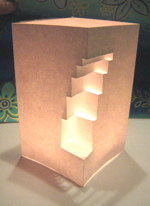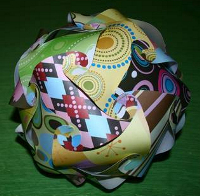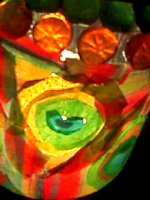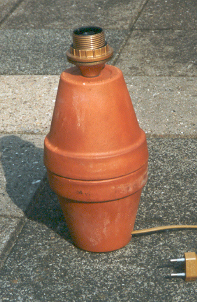On the photo you see an oil lamp from an espresso cup, plain, cheap cooking oil and cotton. On the page with the instruction there are more but I always wanted to try this one.
And I learned a lot:
- The tip of the cotton must peep out a good piece and be well twisted, otherwise the flame is too small (as you can see on the photo).
- If the cotton is soaked it is quite difficult to bring it to burn (but be always careful anyhow!).
- My ‘Espresso lamp’ burned about seven hours (!).
- It hardly smelled.
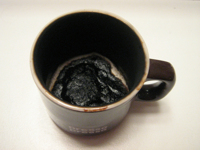
But: I always have to keep an eye on it: At the end when the oil was nearly burned the cotton began to burn and the cup was very, very hot and totally sooted.
Fortunately it didn’t break.
Part of the soot was ‘only smudgy’ and I could wipe it away, but part of it was kind of burned in and it took me the time of a whole motion picture (and lots of force!) to get the cup clean again.
Anyhow I will do this again because it is reasonably priced and beautiful.
Perhaps I will drip some drops of essential oil into, but first I must find out what puts off midges ;-)
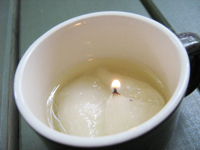

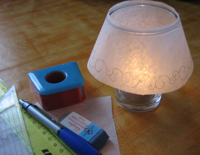
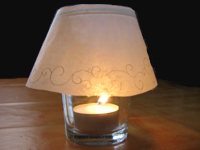 Admittedly a wine glass would look better, because the tea light is hidden then.
Admittedly a wine glass would look better, because the tea light is hidden then.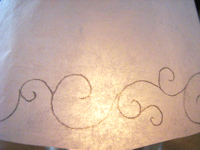 Before I cut the lampshade I embellished it with some flourishes – looks cute, doesn’t it?
Before I cut the lampshade I embellished it with some flourishes – looks cute, doesn’t it? Height H = 6 cm
Height H = 6 cm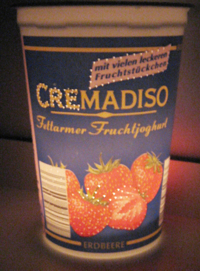
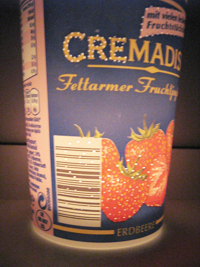 In fact I found the hole pattern around the lettering the most interesting.
In fact I found the hole pattern around the lettering the most interesting. What I also liked was that the lower holes made a nice light pattern.
What I also liked was that the lower holes made a nice light pattern.